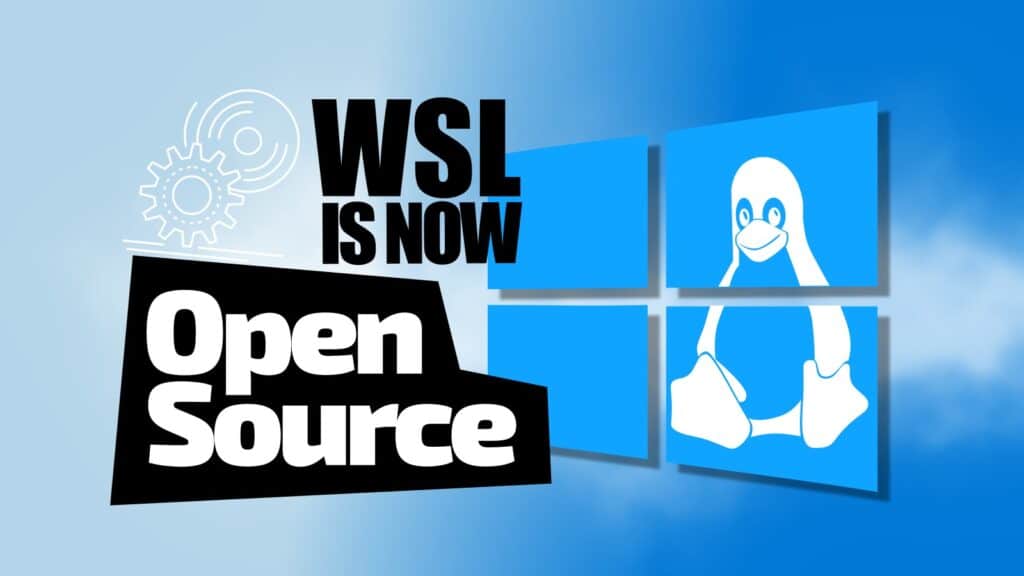Some news comes and goes, but then some stories mark a historic moment in the open source world—this is definitely one of those. In a move long anticipated by developers, Microsoft has released the Windows Subsystem for Linux (WSL) under an open-source license, placing its core codebase on GitHub.
The announcement fulfills the very first request ever filed in the project’s issue tracker—an almost nine-year-old plea to “make WSL open source.”
For our less-tech-savvy readers, WSL, or Windows Subsystem for Linux, is a Windows feature that lets you run Linux directly inside Windows without needing a separate computer or a virtual machine. To be honest, it is incredibly useful, allowing Windows users to get hands-on experience with Linux without the hassle of complex installations or tricky configurations.
Let’s take a moment to look back at a few key events. WSL’s journey started in 2016, when Windows 10 Anniversary Update shipped a compatibility layer (later retro-branded “WSL 1”) that translated Linux system calls on the fly through the lxcore.sys driver.
Although groundbreaking, that approach still lagged behind a real Linux environment in edge-case compatibility. Consequently, Microsoft unveiled WSL 2 in 2019, switching to a lightweight VM that boots an actual Microsoft-maintained Linux kernel—a change that unlocked GPU compute, GUI apps via WSLg, and, more recently, systemd support.
By 2021, the company had separated WSL’s release cadence from Windows itself, shipping it as a Microsoft Store package. That decoupling paved the way for WSL 2.0.0’s “mirrored networking,” DNS tunneling, and firewall integration.
Back to the topic- what’s now open, and what stays closed? Here’s the situation – the newly opened repository contains all user-mode pieces that make WSL tick:
- Command-line front ends (
wsl.exe,wslconfig.exe,wslg.exe). wslservice.exe, the Windows-side service that spins up the VM, handles distro lifecycles, and mounts shared resources.- Linux-side daemons (including
init,gnsfor networking, andlocalhostfor port forwarding). - A Plan 9 server powering cross-OS file sharing.
Components that remain proprietary for now include lxcore.sys (necessary for legacy WSL 1 users) and the Plan 9 redirection driver (p9rdr.sys) responsible for the \\wsl.localhost share.
So, what can we expect moving forward? In short, a major quality leap for WSL. Because at the moment, there’s a lot to be ironed out. Contributors have already filed thousands of issues and pull requests against WSL-related projects (notably WSLg and the dedicated Linux kernel) despite having no visibility into the main service’s internals.
But no more—opening the codebase removes a major bottleneck for community-driven fixes, features, and security reviews and shortens feedback loops. Additionally, the open-source shift simplifies auditing and supply-chain compliance for enterprises. A transparent WSL is also one less reason to dual-boot or reach for a separate VM.
Developers eager to peek under the hood can clone the repo, spin up a local build, and submit pull requests. Microsoft’s maintainers have published guidelines detailing coding standards, CI requirements, and a governance model.
For more information, see the official Microsoft announcement.

Embrace, extend, and extinguish
“Embrace, extend, and extinguish”, also known as “embrace, extend, and exterminate”, is a phrase that the U.S. Department of Justice found was used internally by Microsoft to describe its strategy for entering product categories involving widely used open standards, extending those standards with proprietary capabilities, and using the differences to strongly disadvantage its competitors.
No thanks.
Garbage wrapped in 24k gold still remain … garbage.